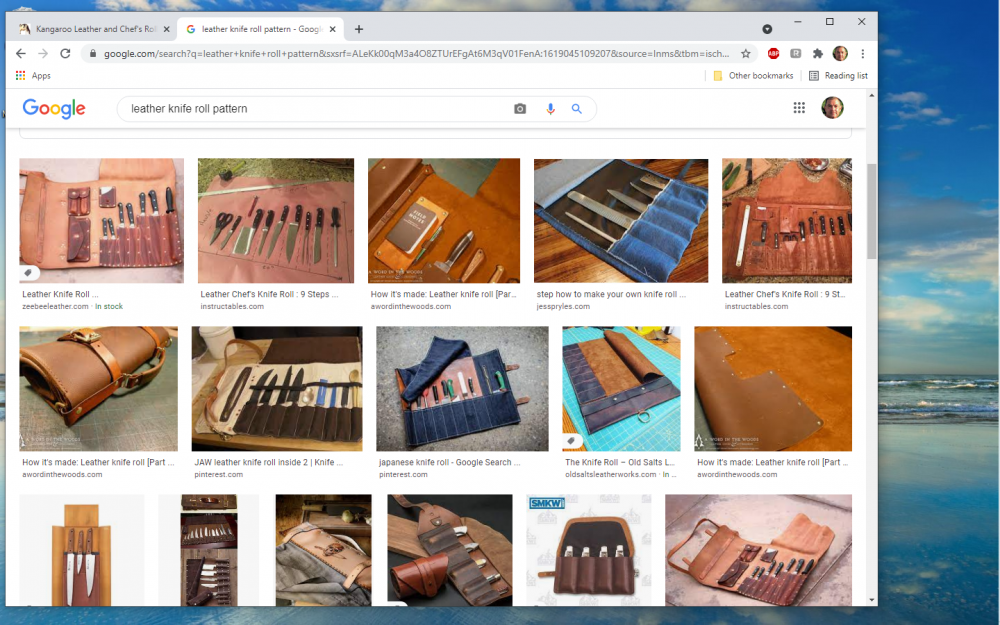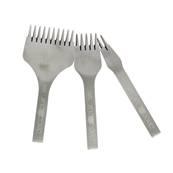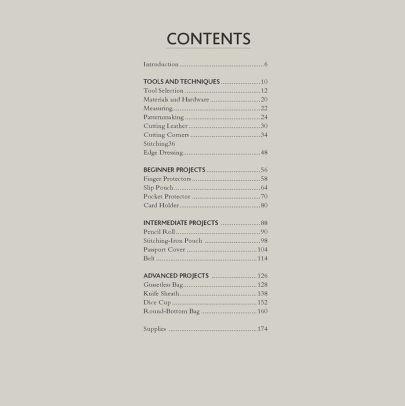-
Posts
2,656 -
Joined
-
Last visited
Content Type
Profiles
Forums
Events
Blogs
Gallery
Everything posted by Tugadude
-

Leatherwork newbie looking for lace source to start braiding.
Tugadude replied to BEDavisBrown's topic in Braiding
Springfield Leather Co. also has kangaroo lace, deer lace, calf, pleather, plastic, you name it. https://www.springfieldleather.com/search?keywords=kangaroo lace&page=1 -
It might help if you were to give your exact location. Otherwise you won't get much useful information.
-

Getting good straight cuts and issues with stitching.
Tugadude replied to rckt1rcn's topic in How Do I Do That?
Answering questions like this is always like trying to hit a target blindfolded. We really don't have enough information. The type of tools matter, the type of leather matters and we really don't know exactly what the issues are. You have gotten lots of advice, good advice and I hope there are answers in there. All I can tell you is that when it comes to making cuts, I found that thinner leather is more difficult because it can tend to stretch when you apply pressure with a knife. So the knife needs to be very sharp, or, you need to learn how to use the rotary knife that I believe you have. But again, even the rotary knife needs a sharp blade. And you need to hold it at a consistent 90 degree angle to the leather. And hold down tight on the straight edge too. Regarding the stitching, following along with the Nigel Armitage videos will help. You can get some decent diamond stitching chisels for very little money. I recommend Springfield Leather for that. Weaver is another good source. -
Study Brian’s work. Everything is thought out, attractive and as close to perfect as you’ll find. And he is generous to help encourage others. I’ve learned so much through his examples.
-

Bi Fold Wallet Flop, Looking for advice
Tugadude replied to ThatTallChick's topic in How Do I Do That?
I don't think you want to use garment leather. It is likely to be too flimsy. You want the leather to have a little stiffness to it. Supple, but stiff. -
Great news on the 0.8mm Rhino Thread. I used the 1.0mm on a minimalistic wallet and it was OK, but smaller would have been preferable.
-

Bi Fold Wallet Flop, Looking for advice
Tugadude replied to ThatTallChick's topic in How Do I Do That?
Everything is relative. There are some on this forum that would consider that just fine or even a little skinny. They frequently recommend 4/5 for the outside and 2/3 or 3/4 for the inside. Chunky doesn't bother them I guess. I'm with you. That needs slimming. So yes, thinner leather is the way to go. Depending on who you are buying from, they might offer splitting service. They can then give you exactly what you need. I think Weaver does it. As far as the lines, part of it is probably just lack of practice, but there is also technique involved. I have gotten in the habit of using a grooving tool to make the line. I don't remove any leather, just let the sharp part create a scratch. It gives me accurate spacing from the edge and it is nice and straight. As far as pre-punching holes, I've never needed to do that on a wallet. I have done it on thick, multi-layer bags and satchels though and again, it is easy after you practice a few times. On a positive note, your stitching looks way better! So good job on that! -
I found this video interesting. The same technique may work well on the faux leather you intend to use.
-

Handmade Leather Backpack
Tugadude replied to annaemch's topic in Purses, Wallets, Belts and Miscellaneous Pocket Items
Nice work! I agree something should be done with regard to the flap and side condition. Here's one idea, using snaps to "cinch" it in on the sides. Others have used a drawstring arrangement. In the one below, a leather strap in place of a cord or string. I'm sure you've also probably seen the ones that feature a rolled top. I see some wisdom in those. Certainly they provide better protection. -

NMaking Leather Tobacco Pouch
Tugadude replied to nottotell's topic in Purses, Wallets, Belts and Miscellaneous Pocket Items
OK, that would make sense. For some reason I was assuming it was a pipe tobacco pouch. Isn't that funny how an assumption takes you in a direction where you can't see other avenues? -

NMaking Leather Tobacco Pouch
Tugadude replied to nottotell's topic in Purses, Wallets, Belts and Miscellaneous Pocket Items
Very nice project. It is always fun to see the way folks do things. You clearly demonstrate that you can achieve very nice stitching without spending a small fortune on tools. You are very efficient at the way you do it. Is the small pocket supposed to be for a lighter? I wasn't sure. I suppose the pouch could be modified to hold a particular size lighter. Thanks for sharing that video with us. -
Found this on the internet regarding my use of crickets. I keep forgetting there are folks from all over the globe and we all have our own idioms. To hear crickets or crickets means silence. The idea is that the only thing one can hear is the chirping of crickets. Crickets are insects that may be found in many parts of the world. There are many species of crickets, including field crickets, tree crickets, scaly crickets, mole crickets, house crickets, and hundreds more. Only male crickets chirp by rubbing their forewings together, which is called stridulation. The idiom to hear crickets or crickets became popular in the twentieth century. This most probably stems from the use of crickets to designate the quiet of an evening depicted in radio plays or in films. The sound of crickets came into use in cartoons to mean silence, usually when an awkward moment was being exploited for humorous reasons. Today, when someone says “crickets” or “all I heard was crickets”, he means that an awkward silence occurred. This may mean the listener did not agree with the speaker or approve of what the speaker was saying. It is often used to describe an instance where a joke falls flat and no one in the audience laughs.
-
Might be an American expression. Basically it means so quiet you can hear crickets. No reply = crickets.
-
While I didn’t do it for recognition, it is frustrating how many times help is taken for granted. I will take a positive attitude and assume the OP has gotten busy and not viewed my post(s). Yep, their last visit was Wed. 1:28 p.m. So, that explains it.
-
crickets.......
-
I think it is really a matter of style. Do you want to feature the stitching or not? Turned bags are quicker for me to stitch because I sometimes use fewer stitches per inch as compared to bags on which the stitching is visible.
-
And finally, when I want to make something I rarely use a pattern. I guess I'm lucky in that I can typically just eyeball something and approximate the sizes and then adjust as necessary. I know many can't do that. So the way I approach it is I go online and search for examples of what I want to create and then I take a little from one design and little from another and combine them all to make something that meets all of my needs. Here's an example of a screen shot of a number of rolls. Just search for "leather knife roll". There's probably more patterns out there to find also.
-
My first thought is that 20 is a lot of knives to put into one roll. I wonder if there is a way to break it up into 2 groups of knives in a way that makes sense? That would cut down on bulk. Here is a video of a tool roll made by Nigel Armitage. It is quite nice and he details the leather used and gives some brief direction on how it came about. Secondly, did you see this instructable? It might be of assistance or inspiration. https://www.instructables.com/Leather-Chefs-Knife-Roll/
-
We've sort of derailed the thread, hope nobody minds. Springfield Leather Co. offers pricking irons that appear to be very similar to the ones that Deco-Cuir is selling. And the pricing is pretty similar. If you have a wholesale account with SLC you can get the set for $29.99. For some reason, the picture won't past "full size" for me. But you can view them on their website, along with the diamond chisels I bought. https://www.springfieldleather.com/ There continues to be an issue communicating what tools we're talking about. Some call them irons, some call them chisels and I'm sure there are other names I'm not aware of. I try to refer to the traditional pricking irons, the ones that are mainly to mark the spacing as irons and the other style, which is designed to fully penetrate the leather as stitching irons, or stitching chisels. I guess I should settle on using the word chisel when I'm speaking of a tool designed to fully penetrate. Stitching chisels can be round, straight or diamond-shaped. Some people have no issue with round holes and many kits come pre-punched with round holes. Many people use a drill press to make holes, which are obviously going to be round. Personally, I've never tried round holes, but except for creating a flatter stitch, I guess they work just fine. Nigel did show how to do a cast on your stitch and encourage a slant even when using round holes, so I could try that. Some of the higher-end stitching chisels are just straight teeth, little to no taper and no diamond shape. Still others feature a pronounced diamond shape. I guess there truly is something for everyone.
-
-
I'll grant you that some irons are quite spendy, but many aren't. I bought some very nice ones recently, a 2-tooth and an 8 tooth for around $20.00 U.S.. The other thing is that while there is no arguing that using an awl to make your holes makes for a stronger seam, most of us aren't manufacturing saddles and tack. We're doing wallets and bags where the irons are just fine. I don't think we are that far apart in opinion. I see the value of traditional stitching with an awl and anyone that is invested in becoming a leatherworker should learn to use the awl. But for a lot of projects, stitching irons make sense and therefore, people should know how to use them properly. There are still things to learn such as which irons are conducive to the style of stitching you desire, size of thread, etc.
-
I don't know what the actual numbers are as far as people involved in leatherworking, but I am led to believe that it is a shrinking business. I'm referring to quality, handmade products. Beginners are going to have almost immediate success with their stitching if they follow Nigel's instruction. He teaches how far from the edge to make your stitch line, how to scribe it and how to use the stitching chisels properly and finally how to stitch it. If someone is careful to follow his guidance, they can come away with an attractive project the first time around. If he taught them to rely solely on pricking iron or stitching groover and awl, probably not. So yes, the book is designed to offer the most approachable method for beginners to have success. And hopefully that success translates in them remaining in the craft. At a later date they can and should learn to use an awl properly. Then it is up to them to choose which way to go or to use the right tool for each respective job. Sometimes that might be a stitching chisel. I have completed projects with an awl, so I'm not speaking as one that only uses stitching irons, but I do find myself using the irons for most of my work. I am a hobbyist, not a professional but I'm proud of the level of stitching I've acquired and am happy with my results. And I owe it all to watching Nigel's videos.
-
To be fair to Mr. Armitage, he has indicated that this isn't necessarily the book he has wanted to write. I'm sure at some point he will offer a more comprehensive text on stitching with a saddler's awl. Update! A second book is in the works. You can find out more on Nigel's Facebook page. https://www.facebook.com/ArmitageLeather/
-
-
What, specifically did you order? Just curious because on their website they don't list anything as "harness leather". Do you remember the exact description?






